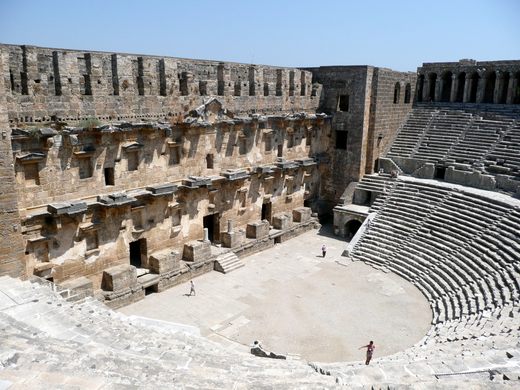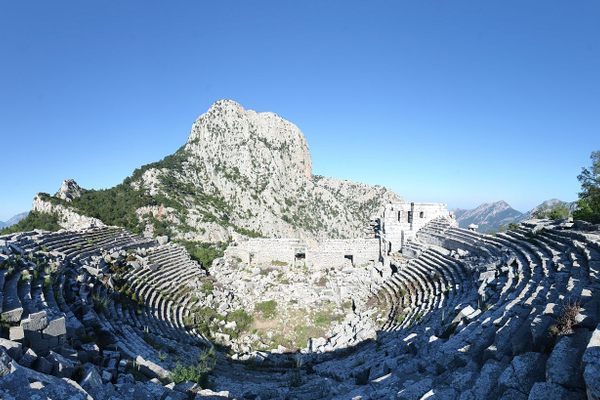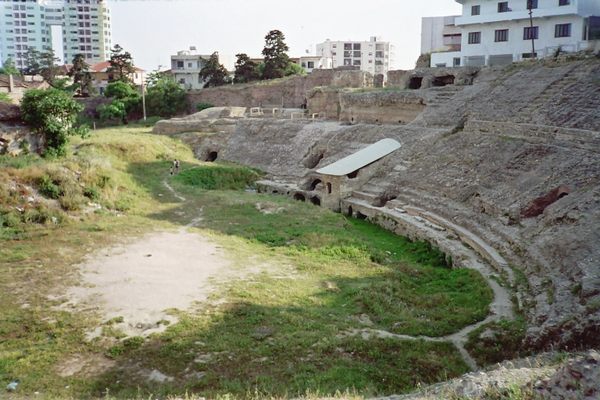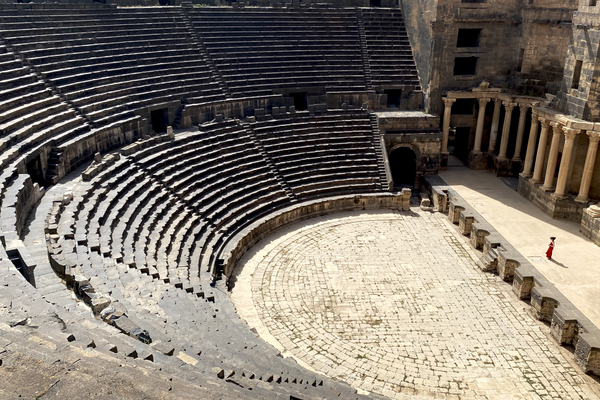Aspendos Theater
The best-preserved ancient theater in the world.
The ancient city of Aspendos lies in Southern Turkey, in the ancient region of Pamphylia. Due to its location along the once-navigable Eurymedon River, it rose in wealth and prominence with the trade of valuable resources, and was successively ruled by Greeks, Persians, and Romans. A number of ancient structures survive today, including the nymphaeum, basilica, and agora, but the architectural jewel of Aspendos is its theater, widely consider the best-preserved ancient theater in the world.
The theater was built during the reign of the Roman emperor Marcus Aurelius (160 to 180). Thanks to inscriptions on its walls, we know exactly who designed it: Zenon, son of Theodorus. The inscriptions also tell us that the Greek architect, who was born in Aspendos, was funded by two rich brothers, A. Curtius Crispinus Arruntianus and A. Curtius Crispinus, who gifted the theater to the city.
Despite being built during Roman rule, the theater displays many Greek characteristics. As was tradition, the spectator tribune is dug out of the eastern slope of the acropolis. The rest—the stage, rear wall and flanking towers—are constructed from a system of stone-built arches and vaults.
The sheer scale of the Aspendos Theater is impressive. The overall width of the theater is 315 feet (96 meters), with other elements following general proportions: the width of the stage is half the width of the building, and the diameter of the orchestra is half the width of the stage.
The spectator tribune, meanwhile, is divided in two parts by a horizontal walkway called the diazoma. The lower section contains 20 rows of seat, while the upper has 21 rows. The theater’s capacity has been estimated at between 7,300 and 7,600 people at least, with room for 8,500 spectators if the stairs were used as seating (other estimates have placed the capacity at around 20,000, but that would have been a tight squeeze indeed).
The theater is also known for its excellent acoustics and exquisite architectural ornamentation. The two-story stage building is particularly impressive and, like most of the theater, has been exceptionally well preserved. This is largely due to the city’s continuous settlement through to the Byzantine and Seljuk periods. The Seljuks had used the theater as a caravanserai, and restored the structure in the 13th century.
In 1909, the British archaeologist David George Hogarth was very much dazzled by the theater. He wrote: “This is not like anything that I ever saw before. You may have seen the amphitheaters in Italy, France, Dalmatia and Africa; temples in Egypt and Greece; the palaces in Crete; you may be sated with antiquity or scornful of it. But you have not seen the theatre of Aspendos.”
And today, the theater is still being used for its original purpose. Every year since 1994, the Aspendos Theater has hosted the Aspendos International Opera and Ballet Festival, with thousands of people taking to the stands—just as they did 2,000 years ago.
Know Before You Go
The Aspendos Theater is located in the ancient city of Aspendos, about 25 miles east of the modern city of Antalya, Turkey. Most people visit Aspendos on a tour from Antalya or Side, which includes the theater and other ancient structures nearby.




























Follow us on Twitter to get the latest on the world's hidden wonders.
Like us on Facebook to get the latest on the world's hidden wonders.
Follow us on Twitter Like us on Facebook